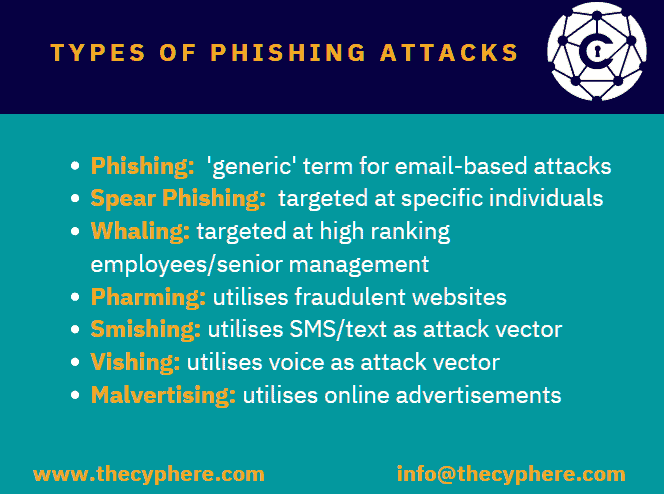
A cyber threat is any kind of attack against what we consider cyber security. Cyber security is what we use to protect our computers and networks from intrusions or attacks that can be harmful to us. There are many different types of cyber threats like malware, ransomware, botnets and phishing scams etc.
In this blog post, we will discuss what are cyber security threats? Different types of cyber threats and examples of top emerging cyber threats in the world!
What is a cyber security threat?
Cyber security threat is the danger of a malicious attack by an individual or organization seeking to gain entry to a network, corrupt data, or steal sensitive information. No business is immune to cyber assaults, which might result in data breaches. Some cyberattacks can even destroy computer systems.

A cybersecurity threat is what we use to describe any kind of attack against what we consider cyber security. Cyber security, on the other hand, is what we use to protect our computers and networks from intrusions or attacks that can be harmful to us.
Types of cyber security threats
There are many different types of cyber threats. 10 most common are discussed as under:

Malware
Malware is what we consider a computer program that’s harmful to your computer or network in one way or another making it susceptible to viruses. The malware virus is what damages your computer or network when executed.
Malware is also known as malicious software. There are different types of malware generally divided into four popular areas, namely Trojan horses, worms, viruses and spyware.

Trojan Horses
A trojan horse is what hackers use to gain access into your computer or network without you knowing it’s there until something harmful happens like your data being stolen or the virus performing an undesirable task on your system.
Worms
A worm is what we consider a virus that’s able to replicate itself and spread from one system into another without human interaction.
Viruses
Viruses are what hackers use mainly for Denial of Service attacks on your computer or network taking it offline by affecting its resources instead of stealing data or information from it.
Spyware
Spyware is what hackers use to steal your personal information like credit card numbers, user names or passwords.
Ransomware
A ransomware attack demands large sums of money from you in return for the safety of what we consider cyber security on your computer or network. In a ransomware attack, what you see on the screen is a message requesting payment of some kind to release what we consider cyber security.
This type of threat takes over what we consider to be your computer and what you do on it. It locks up all of the data and information that’s present on the machine until a ransom is paid for its release.
Botnets
A botnet is a type of malware that takes control of your computer, smartphone, or other electronic devices without your knowledge. It can use your devices to defraud others or cause disruptions — all without your approval. Botnets are designed to expand, automate, and quicken a hacker’s ability to conduct attacks at a larger scale.

Botnets are operated via remote programming by cyber criminals who seek to control the devices for their own purposes. These can be used as a launching pad for other cyber attacks, or to steal data from infected machines.
Phishing scam
Phishing scams are a type of attack against what you use on the internet. This is done through social engineering and usually involves something that looks like it’s trustworthy but actually has malicious intent behind its creation or operation. Threat actors lure users into clicking a malicious link or attachment.
Phishing scams are what cybercriminals use via email spamming you with dangerous links that appear legitimate but if clicked take your device over and install malware. Phishing attacks can also redirect you to fake websites that will steal your data or information.

Man in the Middle (MitM) attack
In a MitM attack, cybercriminals impersonate what you use on the internet as if they were legitimate. This is done by cyber criminals intercepting your data or information either in transit or at rest and then stealing it from there to gain access to your computer or network.
These types of cyber threats can be very dangerous. In MitM attacks, the goal is to fool a user into believing that they’re communicating with one machine when they’re really talking with another. This can happen between two machines or even on your machine and what you believe to be the internet.
SQL Injection
SQL injection is a cyber attack on your systems, done by adding SQL code. It is a method used by hackers to either access or modify database information. This can give hackers access to your private information like passwords and credit card numbers etc.
SQL injection vulnerabilities are methods that cyber attackers employ to gain access to your computer or network. It is perpetrated by injecting SQL code via forms on a website, email attachments and mobile apps which allows cybercriminals to execute commands that can include stealing data or information from the system for their own uses or gaining complete control of the machine itself.
Attacks on IoT Devices
IoT devices are cybersecurity threats because they have been found to be vulnerable from the start. These types of cybersecurity threats can include a large number of compromised IoT devices that cybercriminals use in DDoS attacks on others or even steal data and information for their own uses.
Such cybersecurity threats use smart devices or the internet of things (IoT) to attack you. This can be done by taking advantage and exploiting vulnerabilities present in your device which hackers have access to, so they may gain control over it, including the ability to modify system settings and erase data without permission from users.
Credential Stuffing Attacks
Credential stuffing attacks are cyber security threats because cyber criminals use usernames and passwords that have been compromised online for gaining access to other systems or devices.
This type of cybersecurity threat can be very dangerous, as cybercriminals are using your information from one site against you on another. This is done by taking logins for data breaches of sites like LinkedIn accounts and then trying them on other sites.
These cybersecurity threats are done by cybercriminals taking data or information from one source and using it to their advantage against you in another place. This can also be used as a way of gaining access into your system, network or device so they may steal private information for themselves or destroy your machine entirely.
Cross-Site Scripting (XSS) attacks
XSS cybersecurity threats can be done by cyber criminals taking advantage of flaws in your security. They do this by hiding malicious code within websites, which will inject itself into your computer’s memory when you visit it. The injected script may access information about you, such as private data or even take control of your machine entirely.
This is one of the most dangerous cyber security threats that cybercriminals use because it hijacks your browser and allows cybercriminals to run scripts that assist them in data breaches or take over the system completely. See OWASP Top 10 web application risks for full details on application security attacks.

DoS (Denial of Service) Attacks
DoS attacks deny service to users by cybercriminals flooding a website, server or machine with too many requests. This can lead to the entire system shutting down and not allowing any access at all which could be detrimental for business purposes or even worse – life-threatening when it comes to medical devices like pacemakers.
The cyber security threats of a DoS attack can be very dangerous as cyber criminals overwhelm a system with requests which cause the entire thing to shut down and not allow anyone access. This could even lead to a business losing all of their data or worse, life-threatening cyber threats if it is done on medical devices like pacemakers.
Insider cyber threats
Insider threats in cybersecurity are what we consider employees who knowingly or unknowingly access what is considered to be private information and what you think of as taking it, sharing it with others or selling this data.
This can include employees, contractors, business partners or even a group of people who have access to what you think about as private information and resources that are harmful to your cybersecurity. Insider threats in cybersecurity mainly refer to what happens behind our backs without us knowing it.

Malicious Insider Threats
Malicious insider threats occur when a trusted employee decides to steal data or destroy what is on your system.
Non-Malicious Insider Threats
A non-malicious insider threat happens when employees pose some kind of risk unintentionally like sending out confidential information, opening what we consider to be an email that has malware attached or what is called phishing scams.
Social Engineering
Social engineering is what we call an attempt at tricking you into revealing your sensitive data like user names, passwords and credit card details through emails, phone calls or text messages that appear legitimate but in reality, are not.

In conclusion, there are many cyber security threats that cybercriminals are doing for gaining access to your system, network or device.
It is important to be aware of these cyber security threats because cyber criminals can use any type of information about you against you in one place online and take over control completely on another site.

By being knowledgeable about cyber threats you will have a better chance of protecting yourself and your cybersecurity.
What is cyber threat intelligence?
Cyber threat intelligence in cybersecurity refers to information collected about known or potential cyber-attacks against your system, network and devices. It can be used for different purposes like investigating past incidents or researching cyber criminals.
Types of cyber threat intelligence
Common threat intelligence types include cybercrime-as-a-service (CaaS), cyber crime forums and malware command and control. These types of threat intelligence are used for different purposes like investigating past incidents or researching cyber criminals. these are briefly discussed below:

Cybercrime as a Service (CaaS)
CaaS refers to cybercriminals who offer their services for a fee. This can include hiring them to do cyber attacks or hire someone else, cyber espionage and even buying malware that is used to carry out the attack online.
Cyber crime forums
Here cybercriminals talk about what they have done so others may be able to learn from cyber threats. This type of threat intelligence is used to understand how cyber criminals work and what they are capable of doing, which can include the latest cyberattacks that have happened recently.
Malware command and control
The cyber attack commands sent by attackers to start an attack like sending out spam emails or malware online for others to use against you They are used to understand how cyber criminals work and what is most likely going to happen next or who may be targeted based on the data sent out online.
What is cyber threat intelligence used for?
Cyber threat intelligence can be used in cybersecurity to investigate past incidents or research cybercriminals. It can also help you better protect your system, network and devices from future cyber threats.

Common sources of cyber threats
It’s critical to know and understand threat actors and their methods, techniques, and procedures in order to react effectively to a cyberattack. These include:
Cybercriminals
These are the people committing cyber attacks against you online for financial gain, political gains, social engineering and other reasons to name a few cybersecurity threats that can affect your organization.
Cyber hacktivists
Cyber hacktivists refer to cybercriminals who are active online for political, social or ideological reasons like protesting against the government and its policies.
Malicious insiders
These cybersecurity threats are employees who intend to damage the company or steal information for personal gain.
Nation states
Nation-states refer to governments that may try and infiltrate your system, network and devices online like espionage attacks.
Terrorist groups
Terrorists conduct cyberattacks to destroy, infiltrate, or exploit critical infrastructure to threaten national security, compromise military equipment, disrupt the economy, and cause mass casualties.
Why protect from cybersecurity threats?
Cyber dangers are a serious issue. Cyber assaults can result in power outages, the failure of military equipment, and the exposure of national security secrets. Even worse, cyber attackers can use your system to attack other systems or launch a denial-of-service (DoS) attack that takes down websites like Netflix, Twitter and PayPal etc.
It is mandatory to take action in order to protect your systems against emerging threats. It’s a good idea to educate yourself about cyber security and take the necessary steps to protect your systems from these cyber-attacks which can have a significant impact on what you use. Targeted attacks are more labour-intensive but rely on tools that are designed to exploit vulnerabilities.
They can result in the identity theft of valuable, sensitive data like medical records. They can disrupt phone and computer networks or paralyze systems, making data unavailable. It’s not an exaggeration to say that cyber threats may affect the functioning of life as we know it.
Get in touch to discuss your cyber threats or other primary security concerns with our security experts.
Shahrukh, is a passionate cyber security analyst and researcher who loves to write technical blogs on different cyber security topics. He holds a Masters degree in Information Security, an OSCP and has a strong technical skillset in offensive security.












